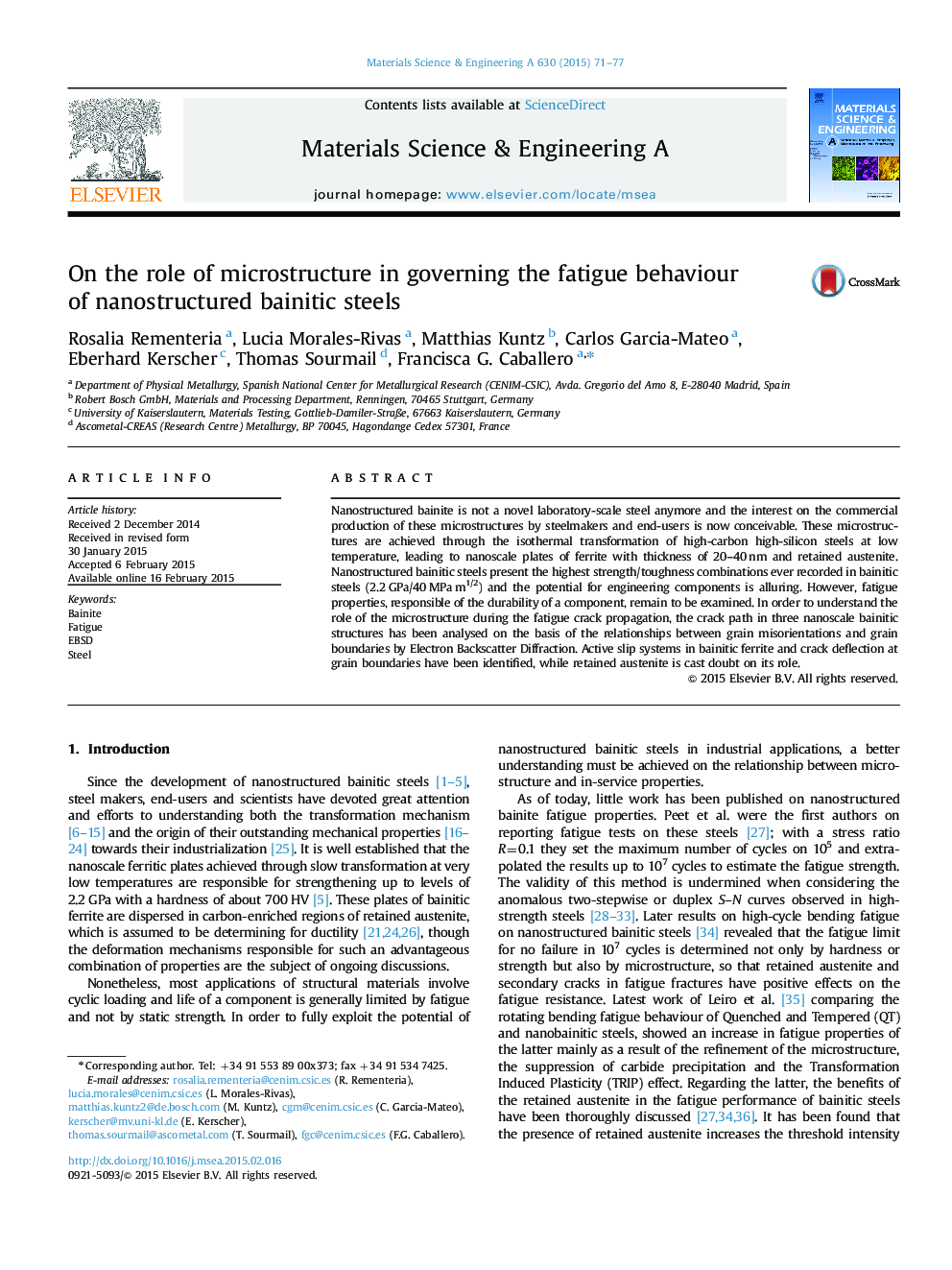| Article ID | Journal | Published Year | Pages | File Type |
|---|---|---|---|---|
| 1574443 | Materials Science and Engineering: A | 2015 | 7 Pages |
Abstract
Nanostructured bainite is not a novel laboratory-scale steel anymore and the interest on the commercial production of these microstructures by steelmakers and end-users is now conceivable. These microstructures are achieved through the isothermal transformation of high-carbon high-silicon steels at low temperature, leading to nanoscale plates of ferrite with thickness of 20-40 nm and retained austenite. Nanostructured bainitic steels present the highest strength/toughness combinations ever recorded in bainitic steels (2.2 GPa/40 MPa m1/2) and the potential for engineering components is alluring. However, fatigue properties, responsible of the durability of a component, remain to be examined. In order to understand the role of the microstructure during the fatigue crack propagation, the crack path in three nanoscale bainitic structures has been analysed on the basis of the relationships between grain misorientations and grain boundaries by Electron Backscatter Diffraction. Active slip systems in bainitic ferrite and crack deflection at grain boundaries have been identified, while retained austenite is cast doubt on its role.
Related Topics
Physical Sciences and Engineering
Materials Science
Materials Science (General)
Authors
Rosalia Rementeria, Lucia Morales-Rivas, Matthias Kuntz, Carlos Garcia-Mateo, Eberhard Kerscher, Thomas Sourmail, Francisca G. Caballero,
